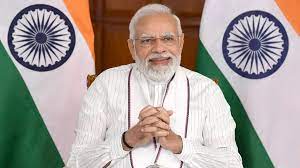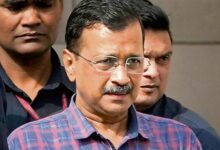Futuristic policies in recent years have increased the reputation of Indian universities abroad, according to PM Modi
On Friday, Prime Minister Narendra Modi said that forward-thinking policies and choices made in the education sector over the last several years had improved Indian universities’ standing internationally.Speaking at the closing ceremony of the 100th anniversary celebrations of Delhi University, Modi observed that there are now 45 Indian institutions included in the most recent QS global ranking, up from 12 in 2014, the year he was elected prime minister.
He mentioned the expansion of IITs, IIMs, AIIMS, and NITs throughout the nation and referred to them as the foundation of the new India.
To go to the function, Modi used the subway. He engaged in interactions with pupils while traveling.
The prime minister discussed his recent state visit to the US at the event. He said that due of India’s increasing competence and the confidence the world has in its youth, the country’s esteem and prestige throughout the globe have increased.
According to Modi, futuristic educational initiatives helped Indian colleges get more international acclaim.
He cited agreements that were struck between the two nations during his visit, saying that they would open up new prospects for young people in India in industries like semiconductors, artificial intelligence, and space exploration.
According to PM Modi, India’s youth would now have access to technology that were previously beyond of their price range, which will help them enhance their skills.
Google and other companies like Micron will make significant investments in the nation. He said that it is an indication of India’s future.
The prime minister praised Delhi University’s contributions to all facets of society and said that it is more than just a university.
The world was led by India’s science during that age, according to Modi, who pointed to the renowned ancient Indian colleges of Nalanda and Taxila.
He emphasized the significant contribution of India to the world GDP at the time by saying, “India’s rich educational system is the carrier of its prosperity.” Continuous assaults throughout the time of slavery undermined these institutions, obstructing India’s intellectual flow and putting a stop to the country’s prosperity, he said.
He said that by producing a potent generation of bright young people, universities significantly contributed to give tangible form to the emotional surge of post-independence India.
He said that Delhi University also contributed significantly to that. According to him, our life, values, and future vision are all shaped by our knowledge of the past.
He also emphasized that India’s economy, which was formerly seen as being weak, is now among the top five economies in the world. According to Modi, individuals who are knowledgeable are content and powerful.
He said that there are now over a lakh start-ups in India, up from only a few hundred in 2014.
The prime minister said that as a result of India’s recent economic expansion, the number of patents has increased.
“The third decade of this century will give impetus to the development journey of India,” he added. “The third decade of the last century gave new momentum to the struggle for India’s independence.”
Modi said the institution should commit itself to the objective of creating a developed India by 2047, noting that its 125th year would coincide with the nation’s 100th year of Independence.
PM Modi also set the cornerstone for the Academic Block, the Faculty of Technology buildings, and the Delhi University Computer Center at the ceremony on the university’s North Campus.
On May 1st, 1922, the University of Delhi was founded. It presently boasts 86 departments, 90 colleges, and more than six lakh students as a result of the enormous growth and expansion that has occurred since then.
The prime minister made a point of pointing out that the University of Delhi’s 100th anniversary festivities coincide with India’s Azadi Ka Amrit Mahotsav, which marks the completion of 75 years of freedom.
“Any nation’s universities and educational institutions reflect its accomplishments,” he remarked.
The prime minister said that over DU’s 100-year history, several historic sites have linked the lives of numerous students, faculty, and other people.
He noted that the gender ratio has substantially improved in the nation and that there are more women studying at DU than males.
The more the roots of educational institutions, the greater the growth of the nation, according to Modi, who emphasized the relationship between a university’s decisions and those of a nation.
He also discussed the freedom in topic choice offered by the new National Education Policy.
According to Modi, the National Institutional Ranking Framework fosters competition among institutions and aids in quality development.
He also emphasized the attempt to connect institutional autonomy with educational excellence.
He described how India’s rising prominence had an effect on the pupils.
He said that people now want to learn about India. He recalled India’s assistance to the globe during the coronavirus outbreak and said that this sparked interest in India among other nations as a country that can deliver even in times of crisis.
According to him, expanding awareness due to occasions like the G20 presidency is giving students access to new fields of study including yoga, science, culture, festivals, literature, history, and gastronomy.
“There is an increase in the demand for Indian youth who can tell the world about India and can take our things to the world,” he said.
He cited the establishment of tribal museums in several states as an example, as well as the prime minister’s museum, which depicts independent India’s progress. He also expressed his happiness that Delhi will soon house “Yuge Yugeen Bharat,” the biggest historical museum in the world.
The prime minister also acknowledged the rising stature of Indian teachers and stated how many international leaders have praised them to him.







